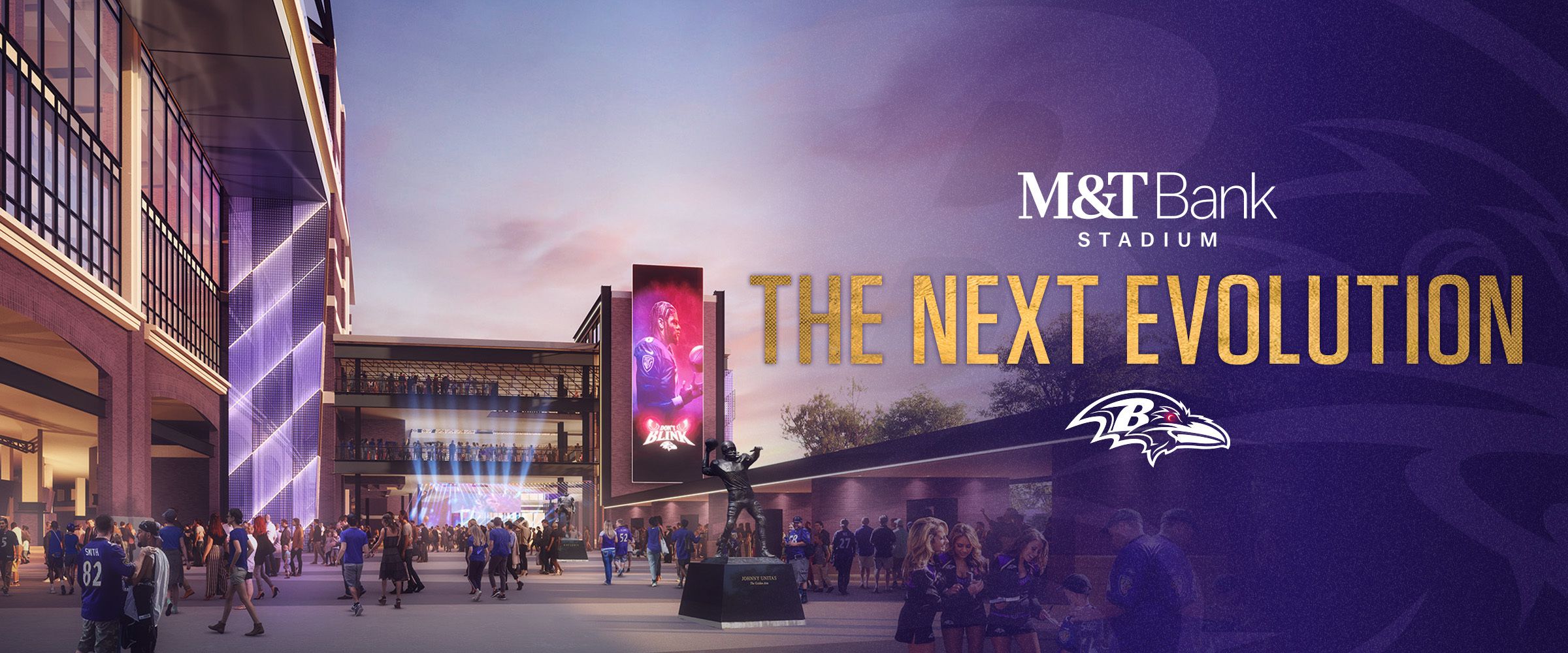Ravens' 2000 Defense Just Third-Best of the Past 30 Years?!?
The Ravens' Super Bowl-winning 2000 defense was one of the best of all-time, right?
Not according to ESPN's Football Outsiders, which compiled a list of the 30 best NFL defenses of the past 30 years. This uses some high-level statistics to make the case.
"Football Outsiders' DVOA (defense-adjusted value over average) metric accounts for every aspect of defense: how well teams prevent yardage, how often they get turnovers, and how well they keep points off the board. DVOA measures success on each play, defined using down and distance, then compares it to an NFL average baseline adjusted for situation and opponent," wrote Aaron Schatz.
The Ravens dominated the list overall. Baltimore had six defenses in the top 30 – the most in the NFL. The rival Pittsburgh Steelers came in second with four in the top 30.
But were there really two defenses better than the 2000 group!?! The formula says the 1991 Philadelphia Eagles and 2002 Tampa Bay Buccaneers both had better groups.
Note that a negative defensive DVOA is good and 0 percent represents the league average. So a defense with a minus-30 percent DVOA rated 30 percent better than an average unit.
Here's Baltimore's top defenses, starting with that famed 2000 group:
No. 3. 2000 Baltimore Ravens (-33.1 percent)
"We can look at the 2000 Ravens in two ways. We can acknowledge that many of the regular-season records they set came courtesy of one of the easiest defensive schedules in history. Or, we can focus on the fact that the Ravens are almost as superlative in Football Outsiders' advanced stats, even after we've adjusted for that super-easy schedule. The Ravens have the best run defense DVOA of all time, and they famously allowed only 2.7 yards per carry for the entire regular season. They had four shutouts and held opponents to 10 points or fewer in 11 of 16 regular-season games. But the Ravens really became legends in the playoffs, allowing just 23 total points in four games to Denver (No. 3 in offensive DVOA), Tennessee (No. 16), Oakland (No. 6) and the New York Giants (No. 8). That postseason performance moves the Ravens up from No. 12 to No. 3 on this list."
No. 6. 2008 Baltimore Ravens (-27.9 percent)
"This was the pinnacle of the defensive rivalry that has defined the AFC North in the 21st century. Baltimore was No. 1 against the run and No. 2 against the pass. Pittsburgh was No. 2 against the run and No. 1 against the pass. The Steelers were the better defense during the regular season, and their average of 4.3 net yards allowed per pass is the best figure of any defense in the past 20 years. But the Ravens move slightly ahead once we consider the postseason because they shut down the Miami and Tennessee offenses in their first two playoff games. The Steelers had the last laugh, however, beating Baltimore 23-14 in the AFC Championship Game and then going on to win the Super Bowl. The All-Pro first team featured two Ravens (Ed Reed and Ray Lewis) and two Steelers (James Harrison and Troy Polamalu)."
No. 12. 2006 Baltimore Ravens (-25.1 percent)
"This edition of the Ravens' defense led the league with 28 interceptions and was one of only five defenses since 1990 with 60 sacks in a season. Adalius Thomas and Ed Reed were first-team All-Pro, and four other Ravens defenders were named to the Pro Bowl."
No. 13. 2003 Baltimore Ravens (-24.8 percent)
"In 2003, the Ravens had five games with at least four takeaways and another six games with three takeaways (including their 20-17 wild-card loss to Tennessee). They also allowed a league-low average of 4.23 yards per play."
No. 23. 1999 Baltimore Ravens (-20.8 percent)
"The Ravens held opponents to just 4.06 average yards per play in 1999, the fourth-lowest figure since the expansion to a 16-game season in 1978. That's actually lower than the legendary 2000 Ravens defense (which allowed 4.29 yards per play). But overall, the 1999 Ravens weren't as good as the 2000 Ravens because they were just average in the red zone and forced a low number of fumbles."
No. 26. 2004 Baltimore Ravens (-19.9 percent)
"Baltimore's defensive record over the past 20 years is just as impressive as the record in Pittsburgh. Since they moved to Baltimore in 1996, the Ravens have ranked No. 1 in defensive DVOA four times and No. 2 three other times. The 2004 Ravens defense limited Peyton Manning and Tom Brady to just one touchdown combined, but they lost both games because their offense was horrible."
And for those wondering how the Eagles and Bucs were ranked higher than the Ravens' 2000 unit, here's the explanation:
No. 2. 2002 Tampa Bay Buccaneers (-36.7 percent)
"This is the best pass defense of the past 30 years. According to DVOA, the Bucs were 51.9 percent more efficient than the baseline during the regular season. They allowed 4.5 net yards per pass, the third-best figure of the past 20 years. They allowed opposing quarterbacks to complete just 51 percent of passes. They led the league with 31 interceptions, nearly double the league average of 16.5. … Defensive end Simeon Rice, defensive tackle Warren Sapp and linebacker Derrick Brooks were all selected as first-team All-Pros, with linebacker Shelton Quarles and safety John Lynch joining them in the Pro Bowl. … Similar to the 2000 Ravens, DVOA penalizes the Bucs for the easiest defensive schedule in the regular season, but they proved themselves further in the playoffs by shutting down two of the top three offenses in the league that year (No. 2 Oakland and No. 3 San Francisco, plus No. 10 Philadelphia). The Bucs don't reach the No. 1 spot of all time because they were "only" eighth in DVOA against the run, including a surprising 27th against the run on third downs."
No. 1. 1991 Philadelphia Eagles (-42.4 percent)
"Looking at raw points scored and allowed can sometimes disguise the true strength of a defense because of problems on the other side of the ball. No team in modern NFL history exemplifies this quite like the 1991 Eagles. … Opposing quarterbacks completed just 44.1 percent of passes, the lowest rate for any defense since 1978. They led the NFL with 55 sacks and 43 forced fumbles. They finished third with 26 interceptions. … Unlike the 2000 Ravens and the 2002 Bucs, the 1991 Eagles didn't get to build a legend with a dominating Super Bowl victory. The team couldn't get enough out of Jeff Kemp, Brad Goebel and a 32-year-old Jim McMahon to even make it to the playoffs. Nonetheless, the 1991 Eagles were the best defense of the past 30 years."
Tucker's Band Director Almost Robbed Him of Us
We all know Ravens kicker Justin Tucker has a music background and sings opera.
But even I didn't know how close it came to him choosing music over football.
Tucker was a guest on the "Freddie and Fitz" podcast as part of their "Most Interesting Man in the NFL" series, and told a story from Westlake High School.
Tucker was entering his freshman year of high school and wanted to play football and play in the band. The school's football coach said that was OK with him, but the band director said Tucker had to choose.
"It was definitely a crossroads in my young life that I had to make this decision," Tucker said. "I was actually kind of good at playing trumpet. The decision was not as cut and dry as one might think."
In hindsight, Tucker said he thinks he made the right decision. But he said it was a shame that he had to step away from performing with his trumpet.
Tucker still followed his love of music in college. He started at the University of Texas as a broadcast journalism major, but dropped it after one class.
"No offense, guys, but it just wasn't for me," Tucker joked. "Kudos to you guys for sticking it out."
Tucker had to audition to get into the school of music, so he took private singing lessons and got in on his first try.
Ravens Have Fantasy Football Sleepers
It's never too early to start talking fantasy football, and the Ravens have some very relevant possible draft picks for you this year.
Yahoo! Sports' Brad Evans and Liz Loza wrote that the Ravens "may have sleeper appeal."
With three top-notch wide receivers in Mike Wallace, Breshad Perriman and Jeremy Maclin and a handful of talented running backs, readers submitted two questions to sort out.
- How do you rank Maclin, Wallace and Perriman?
Loza: "MACLIN. PERRIMAN. WALLACE. Give me the slotman. Last season, Steve Smith and Kamar Aiken combined for over 10 targets per game. Together they also lined up in the slot nearly 50 percent of the time. Their absence opens up a massive opportunity for Maclin, who dominated the slot during his time in Kansas City."
Evans: "MACLIN. PERRIMAN. WALLACE. Last year, the veteran wide receiver most certainly lied to me. But a 'Return of the Mac' could be in order this fall. Yes, Mark Morrison fans, it's a distinct possibility. Expected to man the slot, the KC castoff should lead the team in targets, likely netting 18-19 percent (120-125 looks) of the Ravens share. Build a bond with Flacco and he lands in the WR30-WR33 range. Watch him flow."
- Which of Baltimore's running backs are best to have on your roster?
Evans: "DIXON. This fantasy bullhorn loves Dixon like Jeff Bezos loves conquering the world. My affections for the sophomore rusher, whether expressed in traditional text or on social media, are well documented. He's cagey, versatile, capable of handling a strenuous workload and deceptively powerful. His spectacular leg churn often witnessed last year offered visible proof. Equally dynamite statistically – he ranked No. 7 in juke rate and No. 10 in yards after contact per touch – he possesses the tools to thrive over multiple seasons."
Loza: "WOODHEAD. A hybrid player who notched 80 catches in 2015, Woodhead figures to have a prominent role in the Ravens offense while subbing in for Dixon (who will be serving a PED suspension for the first four weeks of the season). Last year, Steve Smith, Kamar Aiken, Dennis Pitta, and Kyle Juszczyk combined for 306 targets. With all four of those payers missing from the 2017 receiving corps, Woodhead will continue to receive opportunities even after Dixon returns (assuming the vet hasn't absconded with the starting gig). In fact, it's entirely likely that Woodhead could lead all pass-catchers in looks."
Quick Hits



















